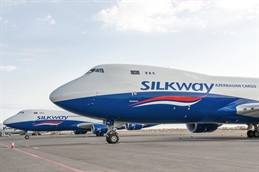
In May Chile’s supreme court dealt a severe blow to the international ambitions of LATAM Airlines when it blocked the carrier’s intended joint venture agreements with American Airlines and the IAG Group.
The court’s verdict slammed the brakes on an effort that had been in the works for three years, as Latin America’s leading carrier discussed the details of the planned venture with its prospective partners and painstakingly worked to obtain regulatory approval in the various Latin American countries where it is registered. It got the green light in Brazil, Uruguay, Colombia and Peru and seemed to be on the home stretch after Chile’s antitrust tribunal gave its blessing last year, but an appeal from travel and consumer rights groups brought the case before the supreme court, which came down against the joint venture.
LATAM, whose headquarters are in Santiago, has indicated that it plans to continue to pursue the deal, but it is unclear how this will unfold.
The plans had been driven by the passenger departments of the airlines. Their cargo divisions were vague on their plans for a joint venture. Andres Bianchi, CEO of LATAM Cargo, said last year that this would provide LATAM’s customers with more routing options.
For LATAM Cargo a bigger priority than a tie-in with the belly networks of American and IAG has been connectivity to Asia, especially maindeck connections, as exports from its region to Asian markets have gone through the roof. In February it launched Boeing 767-300F service from Sao Paulo to Chicago, a move that gave the carrier a third connection point to Asia besides Los Angeles and Miami.
“We designed this operation to offer our customers in Chile a very competitive solution to China and other points in Asia, targeting a total transit time of under 35 hours. This has enabled us to fill a highly significant part of our capacity with cargo transiting to Asia,” said Bianchi.
In the opposite direction, LATAM takes traffic from Japan, Korea, Hong Kong and China to South America. This traffic consists mainly of electronic goods, auto parts, machinery and consumer goods.
LATAM is interlining with Cathay Pacific and Air China over Chicago.
Japan Airlines abandoned maindeck capacity during its restructure in bankruptcy protection, but its cargo division concluded it needed freighter capacity to Europe. Last summer it formed a strategic partnership with Silk Way West Airlines under which the Azeri carrier flies 747 freighters to Japan, where JAL provides ground handling and tenders cargo headed to Europe.
“Silk Way West aims to further expand its activities in Japan in its core strategy to further grow the attractiveness of Baku as its global cargo hub,” said Kamran Zamanov, head of marketing and public relations of Silk Way Group.
“Silk Way West always has an open mind for new business opportunities and therefore considers as well to set up new airline partnerships besides the ones already established such as MAS Cargo and JAL Cargo,” he added.
Jan Krems, president of United Cargo, can relate to JAL’s approach. “I’d like to have access to freighter capacity,” he said.
United Airlines’ joint cargo ventures with Lufthansa and All Nippon Airways are now fully established, but these do not extend to the freighter fleets of the German and Japanese carriers. In contrast to this the joint venture between Lufthansa and Cathay Pacific covers freighters as well as belly capacity out of 14 European gateways as well as the pair’s road feeder services after they started joint sales out of Europe to Hong Kong this spring.
This marked the second phase of their joint venture, following the start of joint selling out of Hong Kong earlier on.
The pair have also moved handling in Frankfurt and Hong Kong under one roof and have worked closely together on network planning, IT and service enhancements.
Stan Wraight, CEO and president of Strategic Aviation Solutions International, thinks that shared capacity and revenues is the way to go for airline joint ventures in cargo. He pointed to the failure of earlier attempts like the WOW alliance of Lufthansa, JAL, Singapore Airlines and SAS, whereas the joint venture of Delta with Air France KLM (which is metal-neutral) has been successful.
Such undertakings require a lot of time and effort, though. For many carriers even setting up more basic agreements are a serious stretch on their staff. Air Canada’s Tim Strauss, for one, would like to build up collaboration with some carriers, but other priorities have kept this ambition bottled up, he said.
By Ian Putzger
Air Freight Correspondent | Toronto




